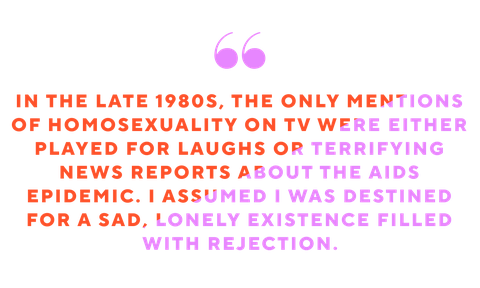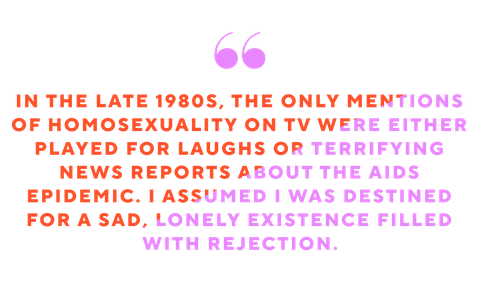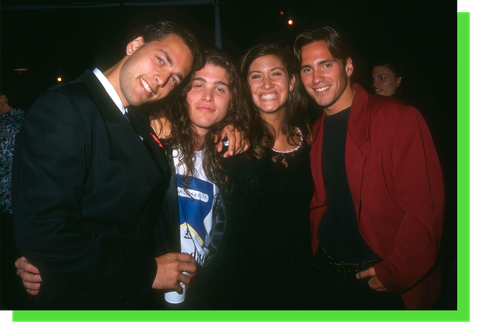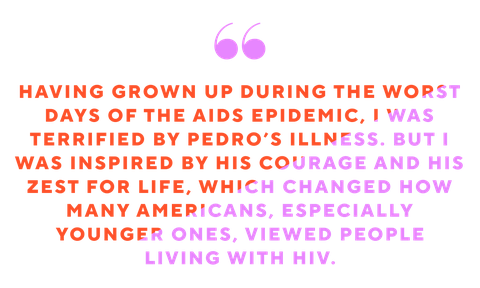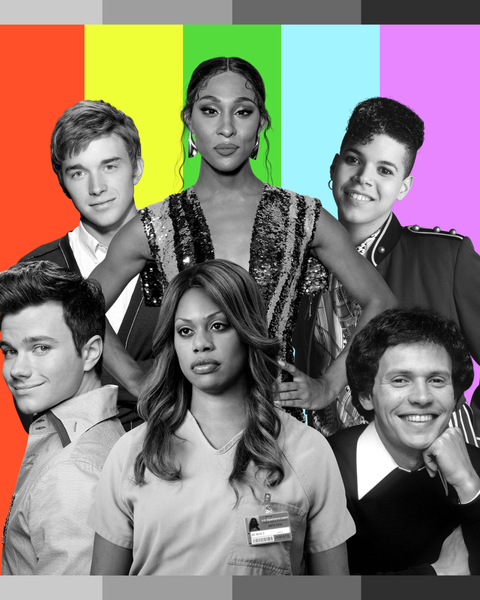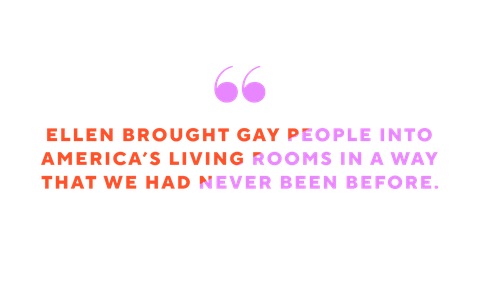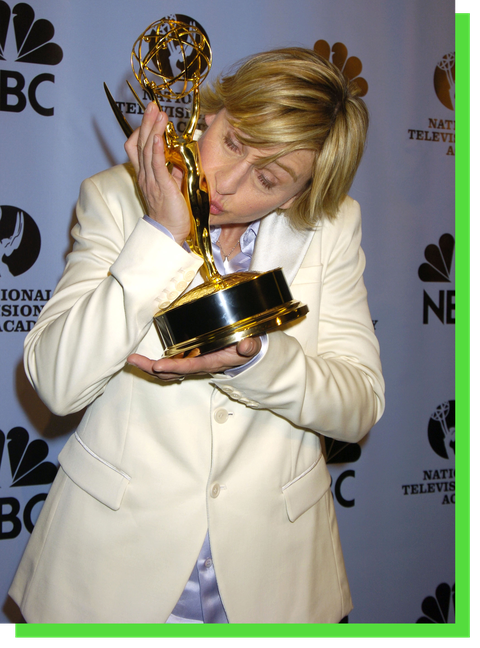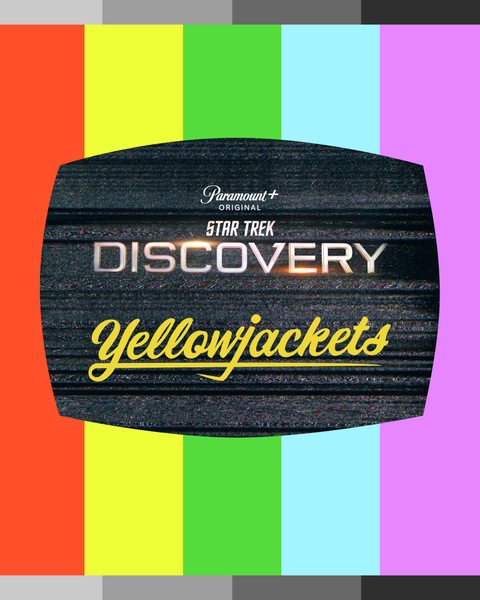The turn of the 21st century was a pivotal time for LGBTQ+ representation. Before streaming services and social media, television was the medium that mattered. Mainstream movies largely avoided gay themes, which could cost studios at the box office. And those that did tread in queer waters weren’t widely seen, such as Too Wong Foo, Julie Newmar, Jeffrey, and Thanks for Everything! In the music world, pop stars like Boy George, Elton John, and George Michael either danced around their sexuality or avoided pronouns or other telltale specifics in their lyrics.
But television was universal. There were only a handful of channels, watched by millions of people, mostly in real time. The impact of a single scene couldn’t be underestimated.
I remember vividly the first time I saw a gay person on TV. Not a gay character—or an actor that everyone “knew” was gay in real life. I mean a real-life out-and-proud gay man. It was Norman Korpi on the first season of MTV’s The Real World.
By the time I was 14, I figured out I was gay. But the only mentions of homosexuality on TV were either played for laughs or were terrifying news reports about the AIDS epidemic. I assumed I was destined for a sad, lonely existence filled with rejection.
Then, in 1992, MTV brought together seven strangers to live in a house. Every private moment of their lives would be taped for millions of viewers to witness. Watching Norm on The Real World blew away all those horrible stereotypes about queer people that had taken up space in my mind. He was young, happy, and self-confident. Norm was an openly gay man living his dream in New York City, going on dates and enjoying friendships with straight people.
For the first time, I imagined a future for myself that was filled with friends, success, and maybe even love. It’s amazing to realize what an impact a single TV show had on me and countless others.
Two years later, through watching The Real World: San Francisco (season three), I first encountered someone with HIV/AIDS: Pedro Zamora, a 22-year-old Cuban-American from Miami, was open about his diagnosis from the start.
The season showed him living life to the fullest, including “marrying” his boyfriend, Sean, in the first same-sex ceremony in television history. Having grown up during the worst days of the AIDS epidemic, I was terrified by Pedro’s illness. But I was inspired by his courage and his zest for life, which changed how many Americans, especially younger ones, viewed people living with HIV.
After Zamora died, on November 11, 1994, President Bill Clinton said he had “taught all of us that AIDS is a disease with a human face and one that affects every American.” He also praised him for showing people living with AIDS “how to fight for their rights and live with dignity.”
The Most Impactful LGBTQ+ Characters in TV History
As The Real World was bringing us fully realized LGBTQ+ people, network television was just taking its first baby steps toward queer visibility. In 1991, NBC aired TV’s first lesbian kiss on an episode of L.A. Law. It would be six years before Ellen DeGeneres came out, both on her self-titled sitcom and in real life.
It’s hard to overestimate what a cultural turning point that was: DeGeneres, a household name by that point, appeared on the April 14, 1997, cover of Time magazine with the headline reading “Yep, I’m gay.”
Those of us leaning out the closet door finally had a real-life icon to point to. And according to a 2015 survey by Variety, DeGeneres’s coming out did more to influence America’s attitudes about gay rights than any other celebrity. Ellen brought us into America’s living rooms in a way that we had never been before. The coming-out episode was viewed by 42 million people and received both a Peabody Award and an Emmy.
I remember standing in the middle of JR’s in Washington, D.C., watching “The Puppy Episode.” The entire bar exploded in cheers as the character Ellen Morgan accidentally shouted she was gay over an airport PA system. It was like a wall had come down, an invisible barrier that was never addressed but always there. But the episode was unsurprisingly met with backlash, too: A group calling itself Media Research ran a full-page ad in Variety, proclaiming that ABC was “promoting homosexuality.” Televangelist Jerry Falwell dubbed the comedian “Ellen DeGenerate” and called for an advertising boycott of the show. (JCPenney and Chrysler decided not to buy airtime during the coming-out episode and Wendy’s stopped advertising on the show altogether.) ABC canceled Ellen after another season and DeGeneres was persona non grata in Hollywood for some time.
In 1998, the same year Ellen went off the air, another show arrived to carry the torch for queer representation on the small screen: Will & Grace. Ellen had been criticized for being too heavy-handed, but the NBC sitcom about a gay man and his best female friend worked to win people over with laughter. “It was just funny,” Eric McCormack, who played Will Truman, told the CBC in 2021. “You could sit down with your grandmother and watch it. And suddenly your grandmother could feel differently and be introduced to the subject, in a way, in your living room.”
The show was one of the most popular on NBC’s “Must See” TV lineup, earning 18 Primetime Emmys throughout its 11 seasons. Amid the chuckles, it seemed to have changed hearts and minds: In 1996, two years before Will & Grace debuted, only 27 percent of Americans backed same-sex marriage. By 2006, when the original series ended, it had jumped to 42 percent.
In 2012, when then-Vice President Joe Biden announced his support for marriage equality, he credited Will & Grace for doing “more to educate the American public than almost anything anybody has done so far.”
The late ’90s and early aughts were a watershed moment for visibility, with characters and shows that had a profound impact on pop culture and on people’s attitudes toward the LGBTQ+ community. As an Entertainment Weekly cover story proclaimed at the time, “In 1995, the gay stream flows freely into the mainstream.”
Why did the dam burst then? Maybe it was having Clinton, an ally (of sorts), in the White House. Or the AIDS crisis finally reaching the mainstream, forcing Americans to look at homosexuality honestly after ignoring it or joking about it for so long.
Or maybe the ’90s were just the era when television finally grew up.
Whatever the reason, the impact of that decade is still felt—on Pose, Love Victor, Euphoria, and so many other series. I can only imagine the future influence of today’s queer-focused shows—in which we’re seeing more comfort showing LGBTQ+ characters of all ages, walks of life, ethnicities, and nationalities—and the types of conversations we’ll be having 30 years from now. Hopefully, seeing the intersectionality and diversity of identities that are hallmarks of the queer community streamed and beamed to us wherever we are will be so normal, we won’t even give it a second thought.
13 TV Shows That Are Making the LGBTQ+ Community Proud
This content is imported from OpenWeb. You may be able to find the same content in another format, or you may be able to find more information, at their web site.

